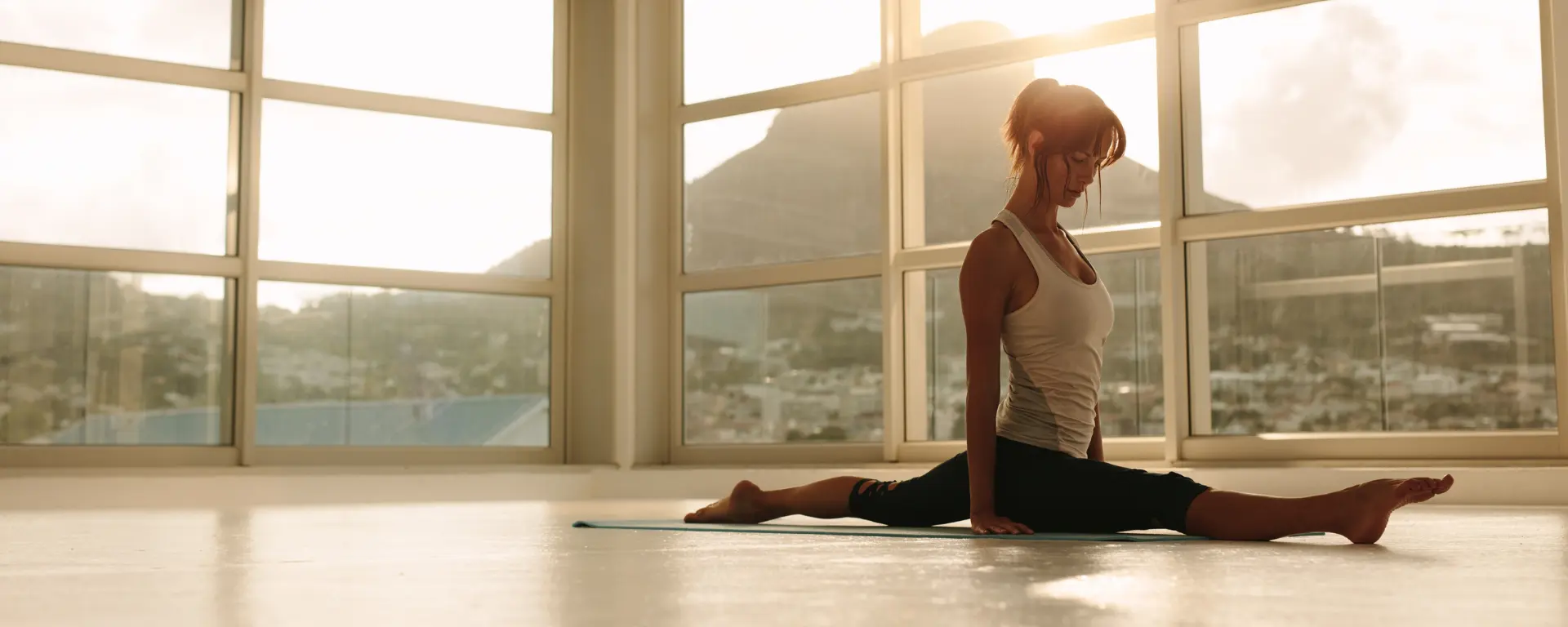
Tight hips cause pain and can impact your sex life and your ability to get the orgasms you want. Lower back pain often results from tight hips and pelvic floor (pf) issues. Sacroiliac(SI) joint pain can also be from the hips and pelvic floor.
An anterior pelvic tilt is a very common posturaln this position, your hips tilt forward, and the hip flexors areightened. Your glutes stick out, and the lower back is compressed and tight. Your misalignment. I shortened and t lower abs are lengthened. All of this can cause misalignments in the pelvic floor and issues.
Pelvic Floor and Hip Impingement Exercises
Hip exercises for women can help, and pelvic floor exercises help even more. Your deep hip stabilizers and the pf are connected via fascial tissue. In fact, pf issues can lead to hip pain. That is why for many, SI joint pain exercises are pelvic floor exercises. SI joint pain during pregnancy is a prevalent problem, so addressing that with pelvic floor therapy exercises helps the pain. Additionally, they prepare your body for the delivery of the fetus by strengthening your pelvic floor.
Sex and Your Hips and Pelvic Floor Muscles
Reduced nerve input and decreased blood flow can result from misaligned hips and pelvic floor tension. This can comprise your ability to orgasm and reduced range of motion in your hips. Also, when your hips are tight, many positions can be difficult or impossible to explore and try.
Orgasms are rhythmic contractions of the pelvic floor, and if it’s tight or your hips are tight, your orgasms may not be as powerful as they could be. That is if you have them at all.
I’m sharing three of my favorite and best exercises for sex for you to help you start opening up your hips and pelvic floor. Our programs are quick workouts for optimal pelvic floor and hip strengthening exercises for those who want more.
Pelvic Floor and Hip Exercises
Move 1: Ball Roll-Over
How to: First, get into a deep squat with the stability ball in front of you. Then turn your feet out 45 degrees keeping your heels off the floor with knee out to the side. Relax your body onto the ball, resting your forehead on the ball. You will want to keep your neck relaxed.
Begin to roll forward and back to starting position as your lower abdominals gently press into the ball. Finally, remember to press your pubic bone gently into the ball. This helps your lower back and hips relax and is an excellent exercise for si joint pain.
Move 2: Ball Scorpion
How to: First, lay over the stability ball on your stomach. Your hips will be in the middle of the ball, and your hands will be on the floor, slightly wider than shoulder distance apart. You will want to keep your neck relaxed throughout the entire exercise, and you will want most of your body weight supported by the ball.
Bend one knee so that it is bent ninety degrees. Then slowly reach that foot up towards the ceiling.
Begin to rotate your hip on the straight leg so it’s as if you are turning your torso away from the ball. Lastly, your toe will drop towards the floor as the knee directs up towards the ceiling, so your lower back is lengthened, and the front of your hip is open and stretched with optimal hip flexion.
Doing the scorpion on the ball is an excellent rotational core exercise and also a fantastic shoulder exercise at the same time. You might begin this exercise without a full range of motion. With time and hip stretches, you will get more movement, improving hip mobility. This is a more advanced move than standard hip rotations.
Move 3: Ball Lunge
How to: First, stand tall, facing away from the stability ball. Then, lift the left leg, place the foot on the top front of the ball, and keep your torso and foot flat on the floor, facing straight ahead. You will keep your torso tall and lifted and your neck relaxed throughout the exercise.
Then, you will slowly move your torso backward. As you do this, your back leg will reach backward, and the front knee will bend to allow your torso to move back. Do not lean forward or lunge straight down, and keep your tailbone dropped as you move throughout this exercise. It is not a traditional lunge. Then, as your torso moves back, the foot on the ball naturally moves backward, and more of your weight shifts onto the back leg. Keep your front knee above your ankle.
Then, press the foot into the ball to return to the starting position. Most of the exercises use your upper body to lift your body back to the starting position. Finally, repeat several times, switch sides, and repeat on the other side. The ball lunge is one of my favorite hip flexor exercises because it stretches and strengthens your hips and other muscle groups.
Note: For additional stability, use a wall and roll the ball along it. You can also hold onto a stable object with one or two hands. You can also add internal rotation for hip rotations as you lunge to advance the exercise.